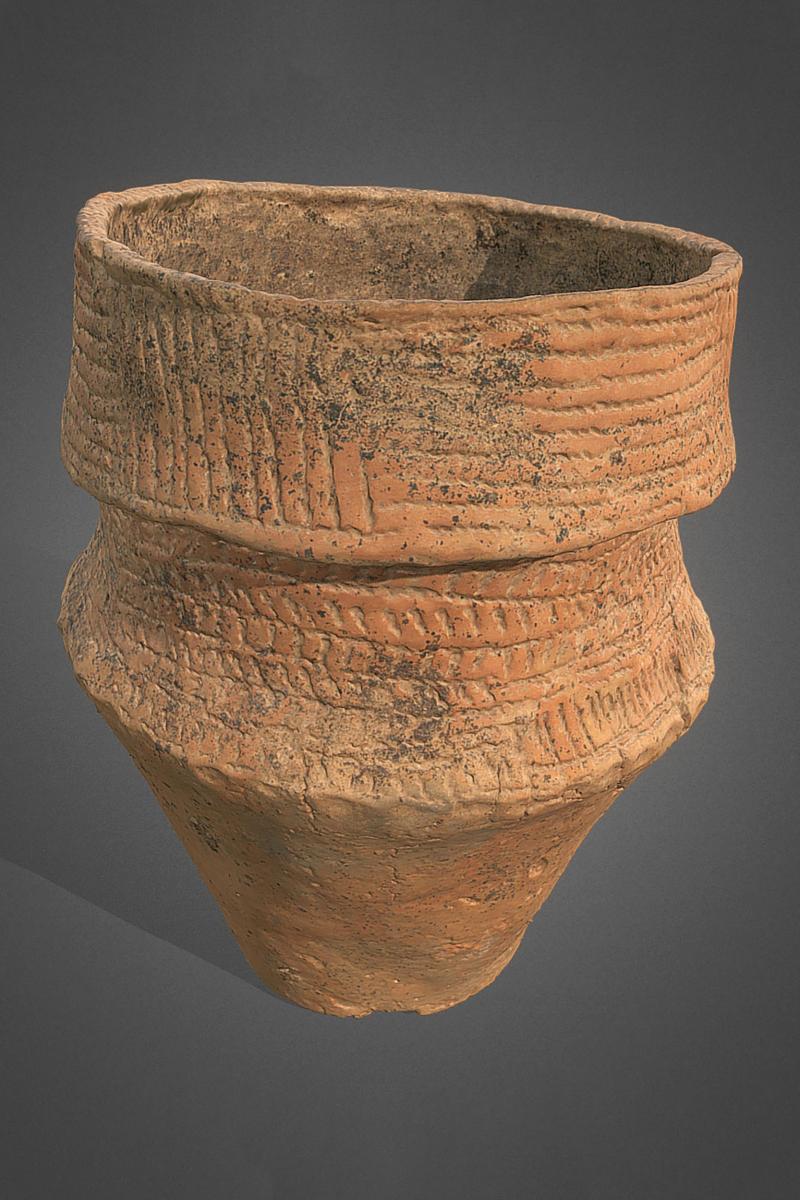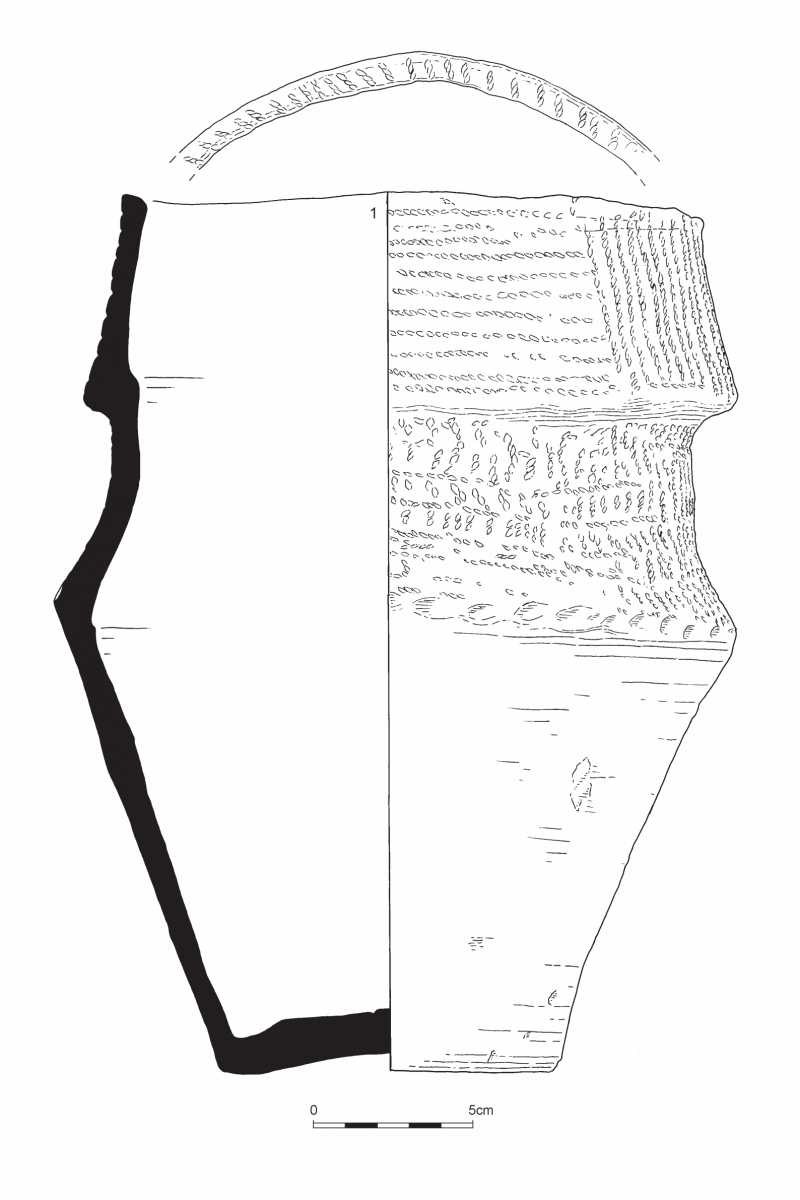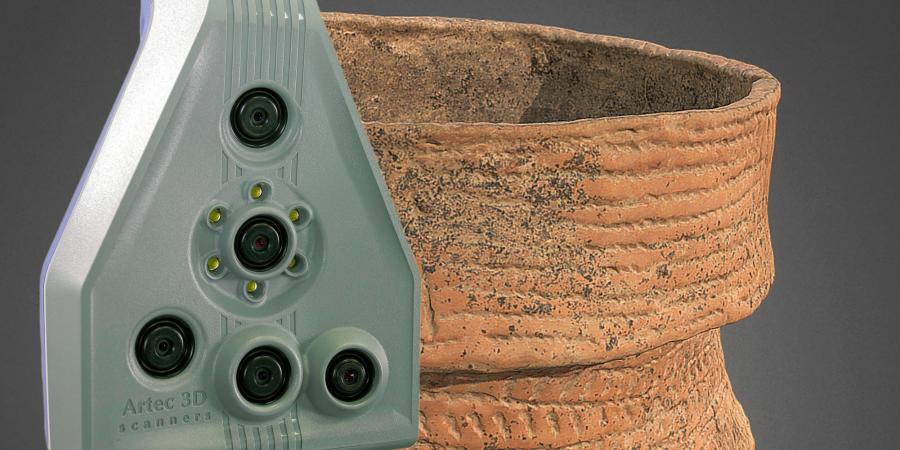Wessex Archaeology recently purchased a new 3D scanner. The instrument, an Artec Spider, is a structured light scanner (SLS). Unlike photogrammetry, which relies on a series of photographs to be taken around an object and then processed in software to create a 3D mesh, the SLS uses a projected set of parallel lines over the surface of the scanned object. These lines are picked up as they deform over a surface by three cameras that create a point cloud and, from that, a mesh. This projection method results in a very accurate result (down to 0.1mm), which is previewed during scanning in real-time. This accuracy also limits the size of objects that can be scanned efficiently to those within a metre in height. Considering the fragile nature of many archaeological artefacts, the advantage of the scanner is obvious over more traditional ‘hands-on’ methods of examination.
A case in point was a pottery urn that a team from our Sheffield office recently excavated from a burial mound near Doveridge, Derbyshire. The urn was found intact, but being nearly 4,000 years old, was in a delicate condition.


Traditional inked drawings are necessary to interpret and record such finds, but there was a risk of damaging the urn (which was showing signs of cracking) during such an exercise, when a certain amount of handling is unavoidable.
In this instance the Artec Spider was used to create a 3D model of the urn. Nancy Dixon, the finds illustrator, printed out scaled orthographic views of the urn and traced them, using a light box to help her see the vessel’s complex decorations and other details through her drawing film. The SLS data was also used to generate ‘slices’ of the urn, in order to accurately record its profile.
Says Nancy, “Due to the fragile nature of the vessel, as well as the extensive and irregular decoration, this was a perfect opportunity to try out the newly acquired scanner. The resulting scans were extremely accurate, so working from orthographic outputs not only reduces the illustration time, but also the potential stress to the artefact caused by handling.”
The urn had been used to bury the cremated remains of three youngsters who died in the Early Bronze Age (18th–19th century BC). Nancy’s drawing of the artefact will appear in a publication on the site currently being prepared for the Derbyshire Archaeological Journal.
The Artec Spider is a useful addition to Wessex Archaeology’s digital conservation toolkit – it is hoped that many more exciting and beautiful objects will be caught in our Spider’s web of light in the future!
